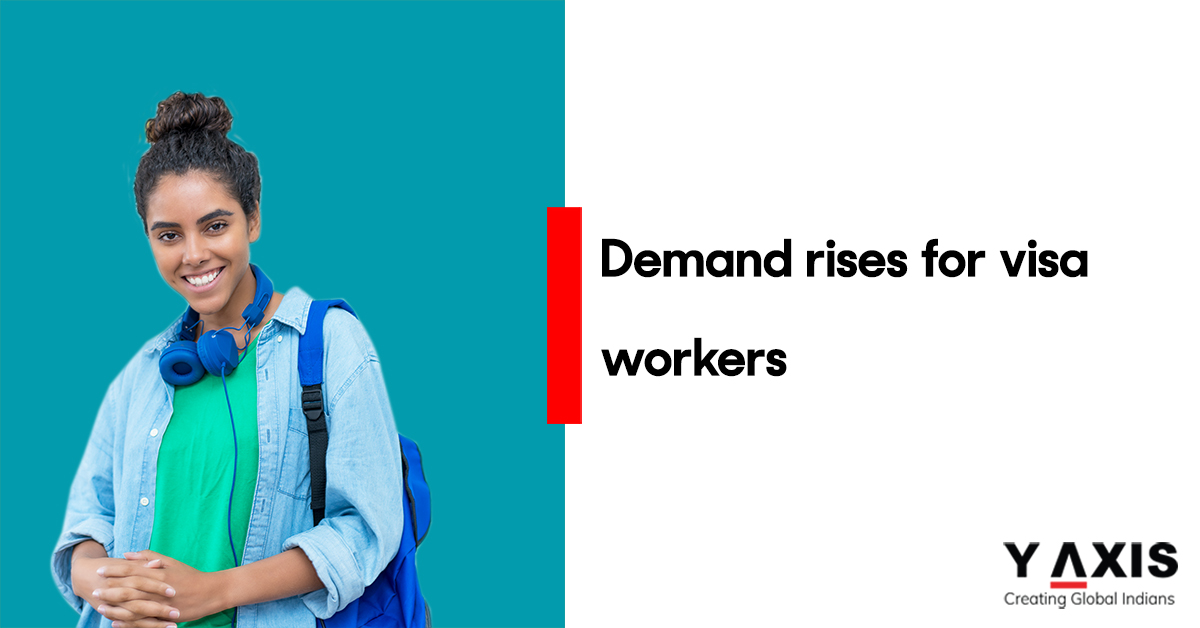Posted on December 15 2011
Demand rises for visa workers
By , Editor
Updated April 10 2023
US companies are seeking more visas to bring highly skilled foreign workers into the country, hinting at a stronger labor market. The annual quota of 85,000 H-1B visa applications was filled in eight months this year, two months earlier than in 2010 - although not nearly as quickly as in the years before the recession, when the quota could be exhausted in as little as two days. “It indicates an improved economy, but not like boom times,’’ said Bruce Morrison, a former Democratic congressman from Connecticut who helped create the H-1B visa program.

This year, the quota was met on Nov. 22, eight months after the application window opened. There are dozens of visa programs for admitting foreign workers, most of them designed for temporary workers. For example, there is a visa for foreign journalists, another for athletes, and yet another for entertainers. The H-1B visa is intended to help US employers temporarily hire skilled workers who may be hard to find in the domestic labor force. Citizenship and Immigration Services begins accepting H-1B visa applications every April. Employers, rather than individuals, apply for the three-year visas, which can be renewed for another three years. H-1B visas have been used them to bring in such diverse professionals as chefs and fashion models, but according to a January study from the Government Accountability Office, 50 percent of the visas go to “STEM workers’’- those with training in science, technology, engineering, and mathematics. Many of the nation’s major technology companies hire H-1B workers directly. In addition, US subsidiaries of outsourcing firms in India seek H-1B visas so they can send their employees to American companies as contract workers. Since its launch in 1990, the H-1B program has been controversial. Businesses say the program helps supplement a labor pool that contains too few engineers and scientists, but technology workers say companies hire foreign workers to avoid paying US wages. The GAO study found that 54 percent of visa recipients between June 2009 and July 2010 were categorized as “entry-level’’ technical workers and paid considerably less than experienced Americans with similar skills. “Certainly, a lot of employers are using it for low-cost foreign workers,’’ said Ron Hira, associate professor of public policy at Rochester Institute of Technology and a longtime H-1B critic. Hira and other critics say the H-1B system is the wrong way to bring in foreign workers. They favor using permanent US residency visas, commonly known as green cards, which would allow the holders to seek full citizenship in five years, and, they say, reduce the risk that workers will be exploited as cheap labor and then sent home. A bill seeking to expand the green card program was passed by the House of Representatives in November but hit a roadblock in the Senate. The bill, sponsored by Representative Jason Chaffetz, Republican of Utah, would eliminate the per-country quota on job-related green cards. Under current law, the United States makes available 140,000 employment-related green cards per year, but no more than 7 percent of the visas can be issued to people from any given country. That means Switzerland, with 7.8 million inhabitants, gets the same number of work-related green cards as China, with 1.3 billion citizens, or India, with 1.2 billion. US companies are eager to tap the large pool of Chinese and Indian technology workers, especially those who have been trained at US colleges and universities while on student visas. Often, such workers can’t get green cards and must return home. “Today, many of the foreign students completing a STEM degree at a US graduate school return to their home countries and begin competing against American workers,’’ said a report released in October by the President’s Council on Jobs and Competitiveness. Chaffetz said that dropping the per-country cap would be a first step toward retaining more of these foreign workers. “Our immigration policy should be blind as to which countries these high-skilled immigrants come from,’’ he said. “Companies want the best people. They don’t care what country they come from.’’ Even in a Congress sharply divided over immigration issues, the Chaffetz bill passed with an overwhelmingly bipartisan vote. But it has been blocked in the Senate by Republican Chuck Grassley of Iowa. “I have concerns about the impact of this bill on future immigration flows,’’ Grassley said in a statement issued by his office, “and am concerned that it does nothing to better protect Americans at home who seek high-skilled jobs during this time of record high unemployment.’’ The House bill is also taking fire from David Lee, president of the Korean-American Scientists and Engineers Association. Lee said that by eliminating the per-country green card cap, more visas would go to applicants from other countries and fewer to Koreans. “It’s kind of a zero-sum game,’’ Lee said. “We’ll be negatively affected by this legislation.’’ The biggest problem, Lee said, is the current total cap of 140,000 job-related green cards. He favors a big increase that would make it much easier for foreign workers to get to the United States, and the idea of providing green cards to any foreigners who earn advanced degrees in mathematics, engineering, or the sciences from US universities. Hiawatha Bray 12 Dec 2011 http://bostonglobe.com/business/2011/12/12/demand-rises-for-visa-workers/MK7kY8avLgy08eeNHKz0qL/story.html
Tags:
H-1B visa
US Companies
Share
Options for you by Y-Axis
Get it on your mobile
Get News alerts
Contact Y-Axis

